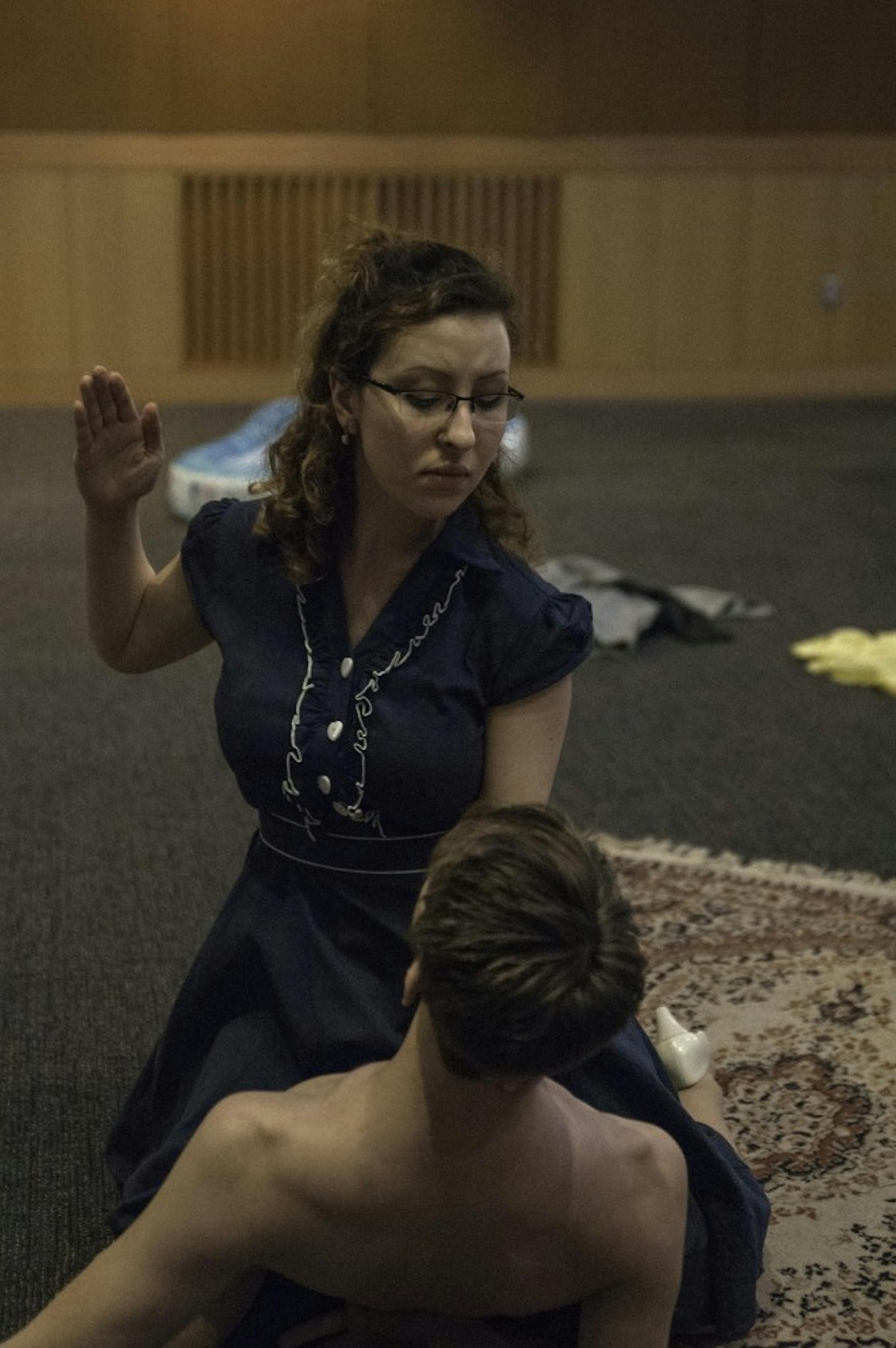'The Danube' flows into Mandel
“The Danube,” as directed by Dylan Hoffman ’18 for his senior project, is the third Brandeis production of a Maria Irene Fornes play in the 2017-2018 academic year. Following “Fefu and her Friends,” directed by Prof. Adrianne Krstansky (THA) and “Mud,” directed by Sophia Massidda ’20, Hoffman’s “Danube” is the first Brandeis production of Fornes’ to be spearheaded by a male director.
Hoffman, along with assistant director and stage manager Jessie Kinsley ’20, took creative liberties with the staging and delivery of the show while keeping the script intact and remaining faithful to Fornes’ intentions. Hoffman told me that Fornes was inspired by a vinyl record that was meant to teach English speakers Hungarian. Many of the phrases from the record were added into the script by Fornes, and Hoffman utilized this information by working the record into his staging.

LIP READING: Raphael Stigliano ’18 provided the voice and disembodied mouth that appeared on the screen in “The Danube.”
Hoffman and his video designer, Nick Sutera ’18, took advantage of the flat-screen television in the Mandel Center for Humanities Atrium and used it to display videos of a disembodied mouth responding in English to recordings of basic Hungarian sentences. Many of the scenes would begin with a “unit” on the recording. Raphael Stigliano ’18 provided the voice and disembodied mouth that appeared on the screen. Stigliano and the actors switched off, allowing the audience to hear the lines in two separate contexts. This concept was incredibly well-applied to the narrative and added a level of depth not found in the original script.
The set also included a kiddie pool, a visual representation of the Danube River designed by Hoffman and Alexa Gilbert ’18, but not required by Fornes’s script. “With very few exceptions, I rarely follow stage directions,” said Hoffman. “The transition music I used was prerecorded and chosen by me. The Blue Danube Waltz in the script is not used, and there are no blackouts like in the script.” Hoffman created an atmosphere with his staging that evoked the kind of human-technology hybrid that would be familiar to viewers of cautionary sci-fi television shows such as “Black Mirror” and “Mr. Robot.”
The cast included Ryan Sands ’19 as Paul, Haia Bchiri ’20 as Eve, Peter Diamond ’20 as Mr. Sandor, and Alex Wu ’19 in a myriad of ensemble roles. Sands and Bchiri as the young lovers were incredibly charismatic and possessed a magnetic chemistry every time they were on stage together. Diamond shined bright in his role as the businessman Mr. Sandor and serenaded the audience with a delightful singing voice. Wu displayed a malleable range in her multiple ensemble roles.
Once the play had ended and the actors taken their bows, Hoffman addressed the audience to ask about their interpretation of what they had just seen. He took the opportunity to provide the spectators with background information on Fornes and to explain the historical backbone of the narrative. In doing so, Hoffman’s senior thesis morphed from an expertly executed theatrical production into a seminar on historical context and the creative process. As Hoffman’s senior project, “Danube” truly represents what makes Brandeis so special: it is a research university where the liberal arts permeate every aspect of one’s education.
Hoffman’s production of Fornes’ “The Danube” comes off as an atmospheric, reality-bending episode of “Black Mirror” with a European theatrical sensibility. It is simultaneously charming and entertaining, while also shedding a light on the dark side of humanity.



Please note All comments are eligible for publication in The Justice.